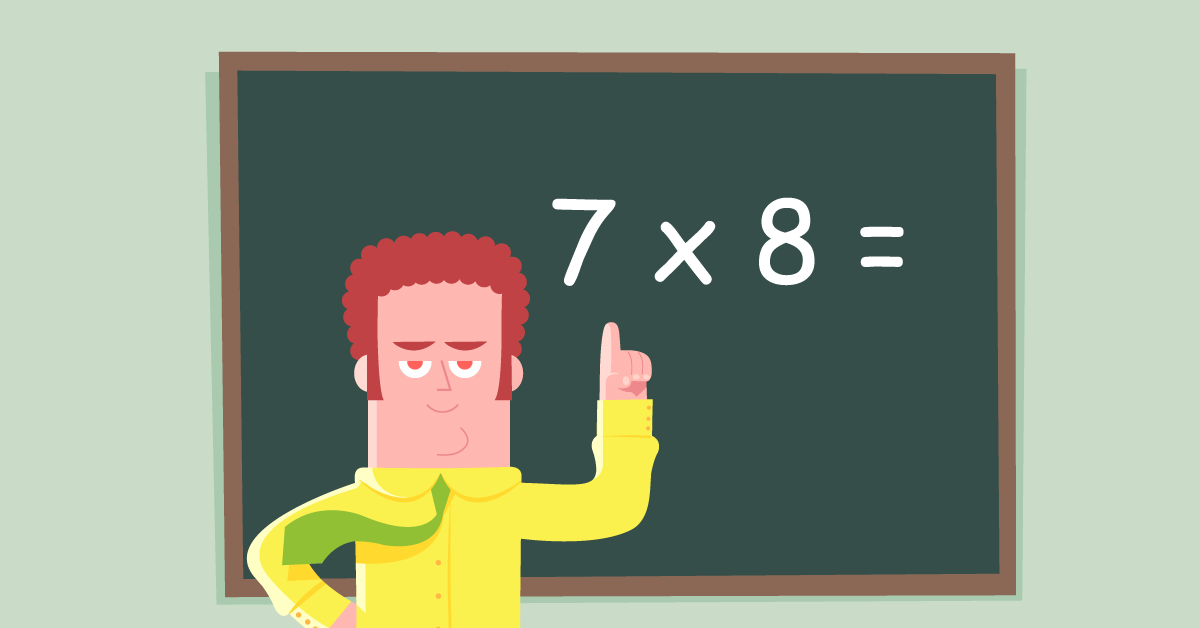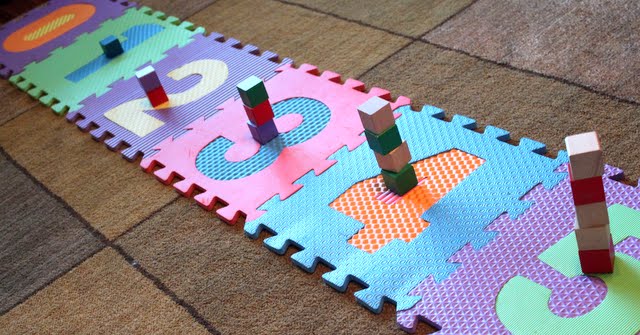Memorizing tables requires practice. Start your child off right by downloading Whizz Education’s convenient time’s table chart, then encourage him or her to fill it in on a wall in their bathroom that they visit frequently (eg, bathroom wall).
Teach them to recite each fact until they have fully grasped it, as reciting helps them understand the relationships among multiples, so easier facts can serve as stepping stones to more challenging ones.
1. Counting
As children start learning their tables, counting can help build fluency and confidence while making sense of multiplication by showing children its patterns within numbers.
Counting can help students grasp the concept of conservation of quantity (in which the amount in a group remains constant regardless of additions or subtractions), which can aid them with more challenging concepts like learning their 6 times table. There are plenty of fun counting games online that students can engage with as part of this learning experience.
2. Visualization
Visualization can be an extremely effective learning technique that helps children comprehend and remember tables. By combining verbal and kinesthetic learning methods – for instance asking children to imagine adding up groups of four, or seven groups of four, then providing the answer! – visualization becomes a potency learning method.
Visual learners and those with high verbal aptitude often find this method of memorizing times tables particularly effective, perhaps due to its holistic process of associating text with imagery; dual coding increases the speed of understanding.
3. Mnemonics
Reciting tables out loud was once considered the only effective technique for learning them; still today some teachers and children prefer this approach, though more modern methods exist that can help kids memorize tables more quickly.
Mnemonics are memory devices designed to make information easier to recall. For example, “I before e except after c” can serve as a rhyming mnemonic for spelling rules; ROY G BLUVIO helps us remember the colors of the rainbow; and PEMDAS serves as an aid when recalling math operations order.
4. Repetition
Repetition helps strengthen neural connections in the brain. Learning involves harnessing electrical energy to produce memory-based neurons; as skills become automatic, less energy will be consumed to produce them.
Repetitive learning helps children understand patterns in numbers – particularly about 2s, 4s, and 6s tables – enabling them to improve mental arithmetic as they age, eventually progressing on to long multiplication, division, and fractions.
At Year 4, children must know all their times tables up to 12 x 1 for proper problem-solving in maths. Knowing these tables forms the cornerstone of other areas of maths.
5. Combination
Maintaining their motivation when studying their times tables can be challenging for children, so make sure they’re having fun and seeing success to keep them engaged in their learning process. Encourage them to find patterns within the numbers such as how every number in a 10 times table ends in zero and each fact builds upon itself.
Many children find it easier to memorize their time’s tables rotely, with reciting them aloud still being an effective learning strategy. Recalling quickly helps strengthen math understanding while helping prevent feeling overwhelmed when trying out new calculations.
6. Drilling
Once children have mastered written tables through construction and concrete objects, they can utilize flashcards or games to practice memory retention of these tables. This can provide an entertaining way to drill them and get the tables memorized quickly and efficiently.
Drilling can also be conducted using a structured, random approach: for instance, students might sit at a table with problems hidden without answers and have them pointed out randomly by a teacher while their child states their answers aloud. This provides visual, auditory, and kinesthetic cues for drilling purposes.
Children must progress at an acceptable pace when using tables; daily drills may assist with this goal.
7. Multiplication
Multiplication tables may seem complex to children. Breaking them down into steps helps children understand how to multiply, making the process less daunting and stressful.
Start with basic facts such as 2 x 2, repeating them over and over. While this might appear tedious, this strategy has proven extremely successful.
Introduce children to the distributive property by using objects they can relate to, such as candles in a candleholder or banana bunches in bundles. This helps children understand that multiplication is similar to repeated addition.
8. Division
Division is often considered reverse multiplication and children may wonder why they need to devote so much time and energy to it. Luckily, children can leverage their understanding of multiplication to make it simpler by thinking of it as a sharing and grouping process.
Use of manipulatives will assist, but for true success, children should first understand and can implement the standard algorithm and long division problems themselves before this becomes effective. Furthermore, remainders need to be introduced sometime around 3rd grade so they have time to take hold.
9. Word Problems
Children in primary school will at some point encounter word problems – those tricky questions that appear on math worksheets, quizzes, and tests that require multiple concepts in one question to solve. Word problems are sure to test children as they navigate these obstacles together with their teacher.
Students must process each problem, understand its premise, and select an approach for solving it before checking their answer. Word problems make maths relevant to everyday life by prompting children to pursue solution strategies that make sense to them and frequently lead them towards correct solutions.
10. Music
Music can help children learn fast and memorizing numbers is often easier through singing than when memorizing alone. Plus it makes learning enjoyable!
These times tables songs use pop tunes that children recognize to help them memorize the numbers. Plus, each table song comes complete with its video so kids can practice answering along to it!
These songs teach multiplication through skip counting and have catchy tunes to make learning multiplication memorable for kids. A popular choice in classrooms. Also available as an iPad app.





